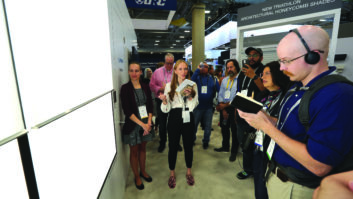
Custom installation is a people business. Our jobs are mini-marriages where we get to know the client intimately for a (hopefully) brief period of time during the project before we hand things off to our 24/7 service department. During these torrid relationships, our field personnel often get to know our clients and sometimes end up changing the scope after the fact. What happens during these exchanges can be profitable or expensive depending on how they’re handled.
Last week one of our clients ended up in a conversation with a Livewire lead tech about a piece of furniture that was needed to house their electronic gear. Next thing you know, we’ve taken on the liability of moving the furniture from the old house to the new house. Was it on the original scope? No. Do we like to make our customers happy? Yes.
Also by Henry Clifford: Gilding the Corners
We ended up moving heaven and earth (and by “we,” I mean our amazing project manager) to make this furniture move happen. Because the original conversation took place between the client and lead tech, we didn’t set expectations with the client that moving furniture is a change order and will result in more billable hours and expenses. Instead, we ended up in a dynamic where the client inadvertently weaponized the lead tech’s well-intentioned commitment back to us as a freebie. How did we end up here?
I used the opportunity as a coaching experience to highlight a few key beliefs that have sustained me over the years:
- Change orders are the caboose on the train. You can’t insert a boxcar into the middle of an already-moving train. If you want to add a change order, it comes at the end of the project so that timelines don’t slip. If it needs to be inserted into an existing scope, we have a candid conversation with the client about the original delivery date slipping and gain their buy-in.
- “Doing it” and “doing it for free” are the same thing except one makes you go broke. We always want to have a written record of any changes to the original scope approved by the client. We know this isn’t always possible in the flurry of the field, but getting that verbal and written acknowledgement is huge. It’s also as simple as saying, “This wasn’t in the original scope, and we’ll be billing this at time and materials, is that OK?”
- Customers usually know well when they’re in one of these grey areas and, without meaning to, will let the “I didn’t ask, and she didn’t say” dynamic mask payment liability. Whatever gets left unsaid will always be interpreted against us.
- The client is all ears before we do the work and deaf after. Because the client wants the work complete and senses we won’t proceed until we gain approval, we’ll have their undivided attention. If we go ahead and do the work with the anticipation that we’ll just sort out everything later, we’re leaving an awful lot to chance.
We use a coaching method called “Feed Forward” that was pioneered by Marshall Goldsmith. It’s a great way to talk about how things could go differently next time vs. litigating the past where egos are easily bruised. We figured out that next time we could pick up the phone and call the customer proactively the second we caught wind of the scope change.
How do you handle scope changes on the fly in your company?
Stay frosty, and see you in the field.







